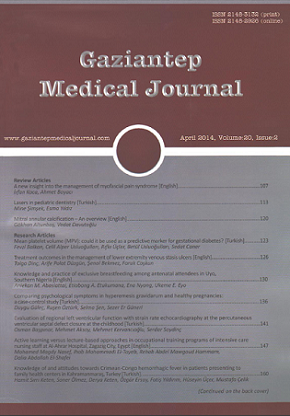Electroconvulsive therapy in a catatonic patient with clavicle fracture
Keywords:
Catatonia, clavicle fracture, electroconvulsive therapyAbstract
Karl Kahlbaum defined catatonia in cases of schizophrenia that had firstly ecopraxia, fluctuating stupor, negativism, posturing, stereotypy, automatic obedience, and mannerism. Electroconvulsive therapy (ECT) and benzodiazepines (BZ) are the effective treatment options in catatonia. Vertebral and long-bone fractures were common in ECT and ECT had a relative contraindication in patients with bone disease before the routine usage of muscle relaxants in ECT. Despite a reduction of the risk with modern ECT procedures psychiatrist's concerns and fears about this issue are ongoing. ECT has been successfully performed in bone fractured and damaged patients. In this case report we presented a patient who had a clavicle fracture due to a traffic accident and simultaneously diagnosed with catatonia and had successfully treated with ECT and BZ.
Metrics
References
Taylor MA, Fink M. Catatonia in psychiatric classification: a home of its own. Am J Psychiatry 2003;160(7):1233-41.
Penland HR, Weder N, Tampi RR. The catatonic dilemma expanded. Ann Gen Psychiatry 2006;5:14.
Dighe-Deo D, Shah A. Electroconvulsive therapy in patients with long bone fractures. J ECT 1998;14(2):115-9.
Shah A, Benbow S. United Kingdom national survey of the views of geriatric psychiatrists on the administration of electroconvulsive therapy to patients with fractures. J ECT 2002;18(4):203-6.
Kellner CH, Tolhurst JE, Burns CM. ECT in the presence of severe cervical spine disease. Convuls Ther 1991;7(1):52-5.
Downloads
Published
How to Cite
Issue
Section
License
Copyright (c) 2023 European Journal of Therapeutics

This work is licensed under a Creative Commons Attribution-NonCommercial 4.0 International License.
The content of this journal is licensed under a Creative Commons Attribution-NonCommercial 4.0 International License.














